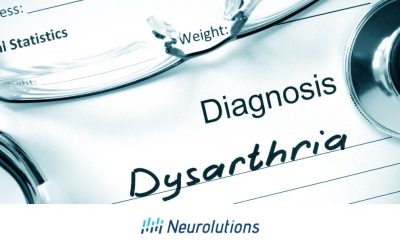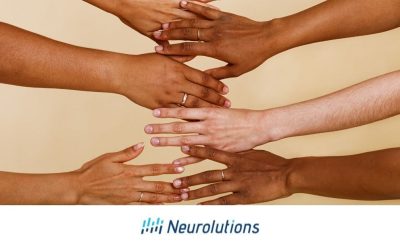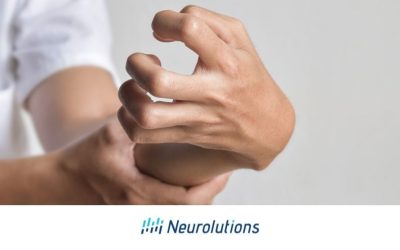The early, or “acute” days after onset of a stroke can be scary, unpredictable, and traumatic for both the stroke survivor and their loved ones. The hospital room is filled with the stroke team providing 24/7 care to support the survivor and stabilize the aftermath of the “brain attack” that recently occurred.
Once the stroke survivor is medically stable, the team must make an informed decision, answering the question, “What needs to happen so we can help this stroke survivor recover and keep them safe?” If the survivor with post-stroke symptoms shows potential to rehabilitate, it is almost inevitable that the best practice recommendation will be a referral to a rehabilitation program.
Life After Stroke
The stroke survivor and their family soon enter a new world where they will be assigned a team of rehab therapists and other staff that work diligently to educate and coach the survivor along the path to their recovery. Fortunately, there are many stroke survivors that make a tremendous recovery. However, a substantial proportion of stroke survivors will continue to struggle with residual stroke symptoms that rob them of their independence and the life they lived prior to the stroke. This can mean a revolving door of therapy sessions, doctors’ appointments, and searching for solutions.
This article will discuss more about what it means to be considered to be in the “chronic phase” after a stroke and what you can do to empower yourself or your loved one to not give up and give in.
What Is Chronic Stroke?
Chronic stroke refers to those who had a stroke and are now past the 6 months of their first initial symptom.
For additional information on what happens during each phase of a stroke, refer to our article on the post-stroke timeline.
Challenges Chronic Stroke Survivors Face
There are numerous long-term clinical challenges that chronic stroke survivors face. These impairments (i.e. symptoms) include, but are not limited to:
Physical impairments:
These include weakness, paralysis, decreased coordination, balance problems, and difficulty swallowing.
Cognitive impairments:
These include reduced arousal or awareness, memory problems, confusion, difficulty problem solving and reasoning, and problems with calculations.
Speech impairments:
These include trouble speaking or understanding speech or written language.
Emotional impairments:
These include depression, anxiety, changes in personality, impulsivity, crying spells, and emotional outbursts.
Functional impairments:
Functional impairments include difficulty engaging in everyday occupations, such as basic self-care, making a meal, shopping, community mobility, going to work, socializing, and hobbies and leisure activities.
Other:
Other potential challenges include decreased energy level, changes in appetite, difficulty sleeping, and sexual dysfunction.
It is important to note that these can be the same challenges that those in the earlier weeks and months following a stroke experience. What is unsettling, however, is once, in the chronic phase of stroke, these challenges have the potential to become more permanent if not addressed.
Additionally, many survivors in the chronic phase also find themselves to be “lost.” They are lost because they may not have the support and attention that they once did in the early phases of a stroke. Many are left to rehabilitate on their own if they have met the maximal therapy quota allowed by their insurance company.
It is a common feeling to believe they have the potential to make more gains, but they just do not know what to do next. Chronic stroke survivors and their families often express abandonment and concern over their future.
It is understandable why one may feel this way, but there is good news!
Once the stroke is no longer considered an emergency and remaining viable brain cells surrounding the dead and damaged tissue have come back “online,” the brain can be put back to work. Progress may have slowed down, but it doesn’t mean it needs to stop.
Say NO TO PLATEAU: What Chronic Stroke Survivors Need to Do
It is never too late to begin stroke rehabilitation- even for those who are in the chronic phase. If you or your loved one is a survivor and have been told that you have plateaued and not to expect any more progress, do not stand for this outdated belief set.
It has been said by the late Pete Levine, researcher, educator, and author of Stronger after Stroke, “chronic stroke may be the end of the beginning, but not the beginning of the end.”
The brain that has suffered a stroke has the capacity to relearn skills under favorable conditions. It is considered far more “plastic” than originally thought. While neurons may have lost communication from failure to activate the pathways between them, there is potential for this to be reversed. While a guiding principle of neuroplasticity is “use it or lose it,” stroke recovery is also built on the promising foundation of “use it to improve it.”
For those in the chronic stroke treatment, it is important to do the following things to ensure you are set up for success:
- Find a supportive physician and therapy team that understands stroke
- Research Physical Medicine and Rehabilitation (PM&R) physicians to manage your rehabilitation plan. If you can still participate in therapy, visit stroke therapy programs to find the right fit for you. Ask about their training, treatment protocols, and technology.
- Adopt a growth mindset and take charge.
- Stroke has taken a lot from you, and grieving is normal and expected. However, try to shake off the victim mindset and find your inner warrior. It may not happen overnight, but finding daily courage to do everything within your power to help you be resilient and open to new experiences is key.
- Identify factors that may be keeping you in a rut.
- Falling into a routine that is keeping you complacent might be holding you back. Remember that it is good to push yourself just enough outside of your comfort zone. This might be trying to do a daily task with less help from others, increasing resistance on your stroke rehab exercises, or finally saying “yes” to going somewhere with friends or family that you had previously avoided.
- When setting goals, reflect on the question, ”WHY?”
- Goal setting needs to be driven primarily by the survivor. Knowing why you want to achieve your goal propels you to keep going when you face obstacles along the way. Make your goals S.M.A.R.T.: Specific, Measurable, Attainable, Relevant, Time Sensitive.
- Get educated and connect with others like you.
- There are thousands of books, blogs, podcasts, and online and in-person stroke support groups out there. You are not alone. Many other people may have the knowledge and resources to help you along your recovery journey. It is important to stay informed of new treatments and technology systems as well that are designed to help accelerate the recovery process.
The Best Treatment and Management for Chronic Stroke Should Include:
- Taking control of your own recovery. Be your own best advocate.
- Engage in rehabilitation efforts that promote function and training for real-world skills. The brain does not make changes just by doing a range of motion exercises or squeezing putty. In addition to mobility exercises, it is critical to use actual objects in your therapy and problem-solve your way through typical scenarios you would in your home or community.
- Repetition and lots of practice to solve the problem. This is no different for the stroke survivor than for anyone who must try again to improve their skill. It may take thousands of trials over many months. Don’t give up.
- Challenge. When it becomes too easy, it needs to be made harder.
- Less reliance on “passive” and “compensatory” interventions. These techniques may have some benefits, but they do not change the brain.
- Engage in purposeful, goal-oriented tasks. If it is not motivating or meaningful, it most likely will not influence the brain as profoundly to sustain, retain, and learn.
- Optimize your brain-body health. Get plenty of sleep, eat nutritious foods, and practice calming techniques for the mind (e.g. meditation, observing nature, a hobby that brings you joy).
- Therapeutic interventions that are included in best practice for chronic stroke. These include functional electrical stimulation during active task participation, constraint or modified constraint-induced movement therapy (CIMT/mCIMT), virtual reality (VR), robotic-assisted therapy, and activities that promote increasing cardiovascular and muscular endurance (e.g. walking, resistance training). (
There are also emerging therapies to keep an eye out for in the future and will soon be available for stroke recovery at home and also in the clinic. These therapies are showing potential benefits to stroke survivors. For more information, visit www.neurolutions.com.
While it is hard to predict just how much recovery a stroke survivor can make in the chronic phase, it is important to keep fighting to make a comeback!
————————————————————————-
Resources
1. Bernhardt J, Hayward KS, Kwakkel G, et al. Agreed definitions and a shared vision for new standards in stroke recovery research: The Stroke Recovery and Rehabilitation Roundtable taskforce. International Journal of Stroke. 2017;12(5):444-450. doi:10.1177/1747493017711816
2. Ballester BR, Maier M, Duff A, Cameirão M, Bermúdez S, Duarte E, Cuxart A, Rodríguez S, San Segundo Mozo RM, Verschure PF. A critical time window for recovery extends beyond one-year post-stroke. J Neurophysiol 122: 350–357, 2019.
Ballester BR, Maier M, San Segundo Mozo RM, Castañeda V, Duff A, Verschure PFMJ. Counteracting learned non-use in chronic stroke patients with reinforcement-induced movement therapy. J Neuroeng Rehabil 13: 74, 2016. doi:10.1186/s12984-016-0178-x.
3. Duncan PW, Lai SM. (1997). Stroke recovery. Topics Stroke Rehabil 1997:51–58
4. Dromerick AW, Geed S, Barth J, Brady K, Giannetti ML, Mitchell A, Edwardson MA, Tan MT, Zhou Y, Newport EL, Edwards DF. Critical Period After Stroke Study (CPASS): A phase II clinical trial testing an optimal time for motor recovery after stroke in humans. Proc Natl Acad Sci U S A. 2021 Sep 28;118(39):e2026676118. doi: 10.1073/pnas.2026676118. PMID: 34544853; PMCID: PMC8488696.
5. Grefkes, C., Fink, G.R. Recovery from stroke: current concepts and future perspectives. Neurol. Res. Pract. 2, 17 (2020). https://doi.org/10.1186/s42466-020-00060-6
6. Lee, K. B., Lim, S. H., Kim, K. H., Kim, K. J., Kim, Y. R., Chang, W. N., Yeom, J. W., Kim, Y. D., & Hwang, B. Y. (2015). Six-month functional recovery of stroke patients: a multi-time-point study. International journal of rehabilitation research. Internationale Zeitschrift fur Rehabilitationsforschung. Revue internationale de recherches de readaptation, 38(2), 173–180. https://doi.org/10.1097/MRR.0000000000000108.




